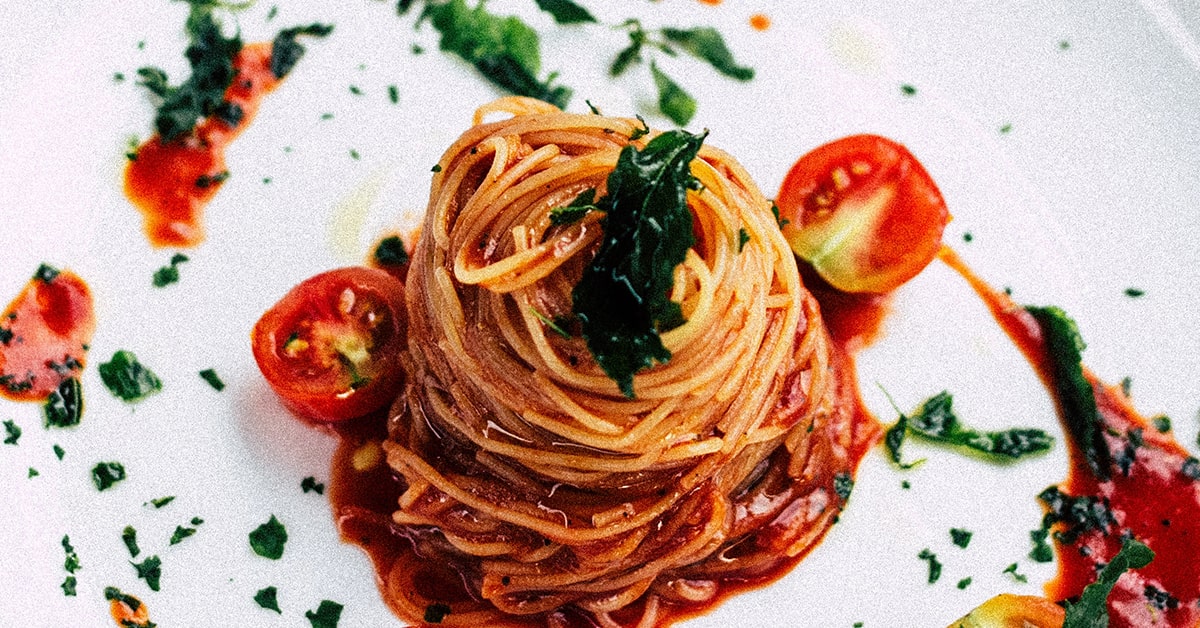
The way you plate and present your food has a big impact on the guest’s restaurant experience. The way you present your food is what tempts customers to try a dish. We eat with our senses: what we see, smell, and feel. And, in the age of social media, food plating and presentation matters more than ever.
A study from Oxford psychologist, Professor Charles Spence, suggests that the food presentation can actually make a dish taste better.
In the study, Spence gave 60 people 3 salads and asked them to rate each one before and after they ate them. The salads each used the same ingredients, but presented them in different ways. One salad was put together with no regard given to presentation, one was neatly arranged, and the third was plated to resemble a painting by artist Wassily Kandinsky.
Can you guess which salad diners liked best?
It was the salad that resembled a painting.
From social media trends and technology to traditional tricks that haven’t lost their magic, get the lowdown on how to market your restaurant with our free guide.The ultimate guide to restaurant marketing
Diners thought it tasted better (29% tastier to be precise), even though it used the exact same ingredients. Spence’s study concluded that consumers were willing to spend as much as three times more on a well-plated dish.
Even basic dishes like a salad can benefit from thoughtful presentation – it makes the dish seem more appetising and valuable.
So, how can you use that information to your advantage?
We talked to chefs Daniel England, Joyce Tang, Tanner Agar, Jim Solomon, Michael Welch, and Brian Poe to learn their favourite food plating and presentation techniques. Each technique focuses on five key food presentation factors: colour, arrangement, balance, texture, and how easy it is for guests to eat.
The top food presentation and plating techniques
- Create height on the plate
- Cut meat horizontally
- Play with textures
- Use contrasting colours
- Match presentation to the restaurant theme
- Choose the right plates
- Serve smaller portion sizes
- Use edible garnishes and decorations
- When in doubt, keep it simple
- Express yourself
1. Create height on the plate
Chef Daniel England likes to create height as he plates food.
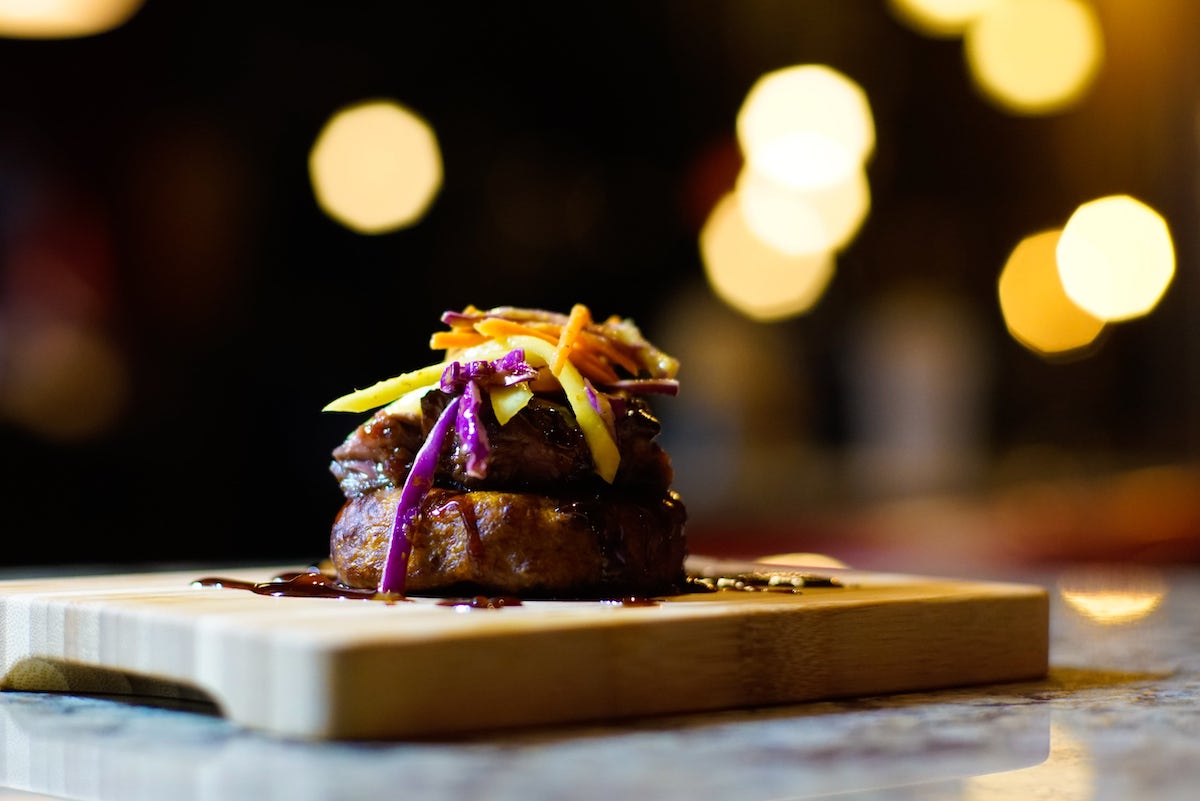
“It’s important that you don’t separate the food trying to fill the plate – build from the bottom up,” he says. “If you could use a little structure, you can always purchase a ring mould to start with a base. Simply pack some food in the mould and gently lift it up. Now you have a base to build on.”
Other ideas for creating height on the plate include:
- Using vibrant leaves as a bed for salads. Try incorporating different sizes and colours of salad leaves, like radicchio, little gem, and frisée.
- Rather than serving ice cream and sorbet on the side, place a quenelle on top of the dessert, as demonstrated by London restaurant, Casa Fofò.
- Big Mamma Group takes things to the next level with its towering lemon meringue pie. Desserts such as pies and profiteroles naturally lend themselves to height.
Leroy utilises slices of fruit to create height on its desserts. Try layering up sliced apple, blood orange, or roasted rhubarb.
View this post on Instagram
2. Cut meat horizontally
England also recommends “fanning” or shingling out slices of meat to show off its quality.
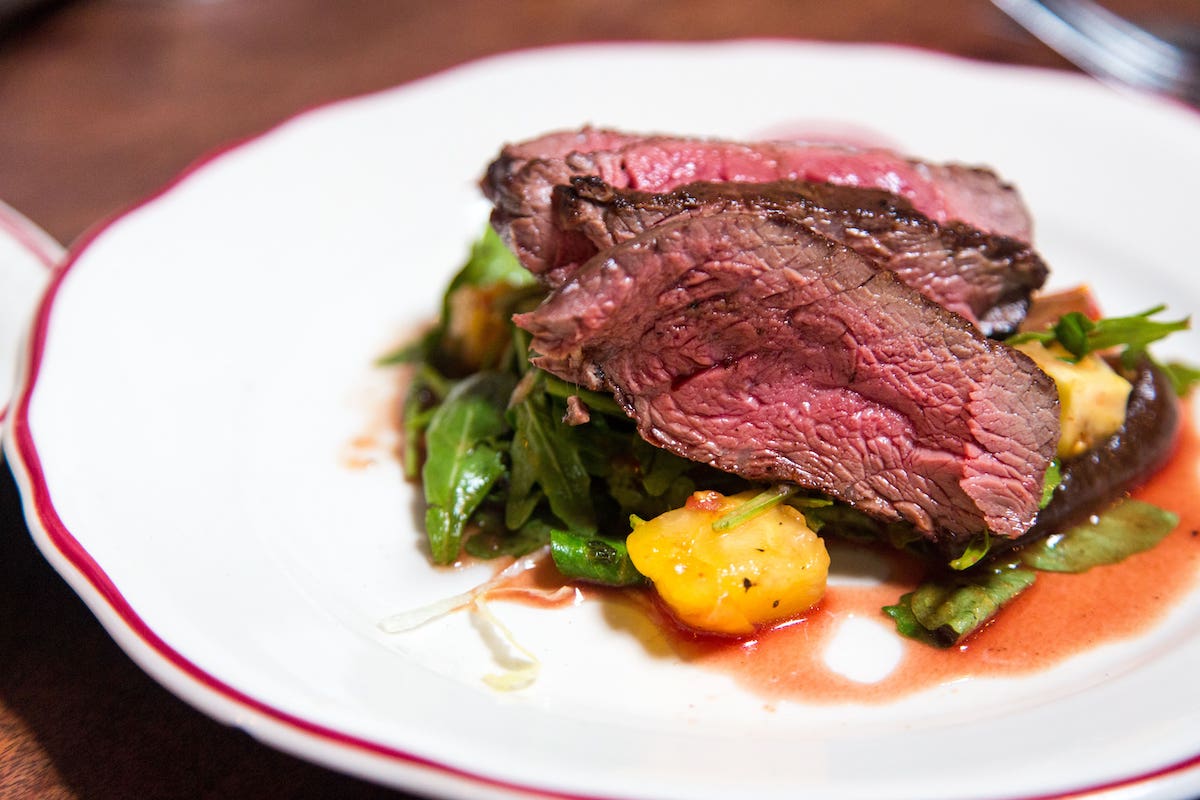
“Slice your meat on a 45-degree bias, and also slice against the grain of the meat for a more tender cut,” he says. “Show off that perfect medium-rare steak!”
This presentation technique works equally well with fish and vegetables, too. Here are a few ways to present other ingredients horizontally:
- When serving crudo, fan out wafer-thin pieces of tuna, salmon, and sea bass across the base of a plate.
- This same fanning technique can be adapted for aubergines, asparagus, carrots and cauliflower. Overlap grilled asparagus on the base of a plate and top with other ingredients, or slice cauliflower, pan-fry and place each piece next to one another.
3. Play with textures
Chef Joyce Tang suggests playing with textures, foams, and sauces to make the dish look more interesting.
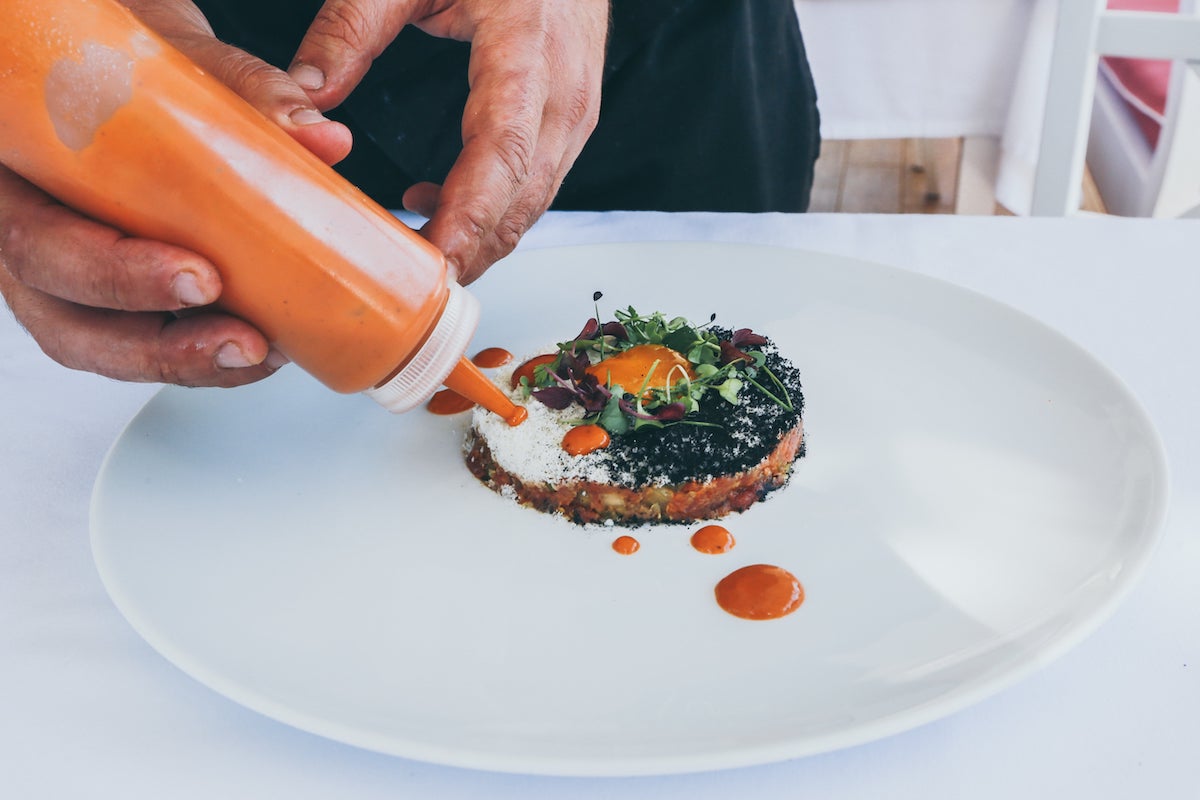
“I like to play up contrasting textures on my plate,” she adds. “Foams are usually really helpful in plating and can be really easily done, playing around with different sauces and textures.”
Here are some ideas of how to incorporate sauces and foams in your dish:
- Do like Llewellyn’s do and use a vibrant vichyssoise as a base for fish and meat.
- Take inspiration from Berber and Q and serve sweet sauces on the side of dessert, so customers can enjoy as much or as little as they like.
View this post on Instagram
4. Use contrasting colours
Tang also stresses the importance of playing with contrasting colours. She avoids artificial colours and uses matcha, powdered sugar, or natural colours to catch the eye instead.
“The way you present your food is hyper-important,” she adds. “The more time you spend on how you present each dish, the more visual interest you can stimulate in folks.”
Restaurant owner Tanner Agar echoes that sentiment.
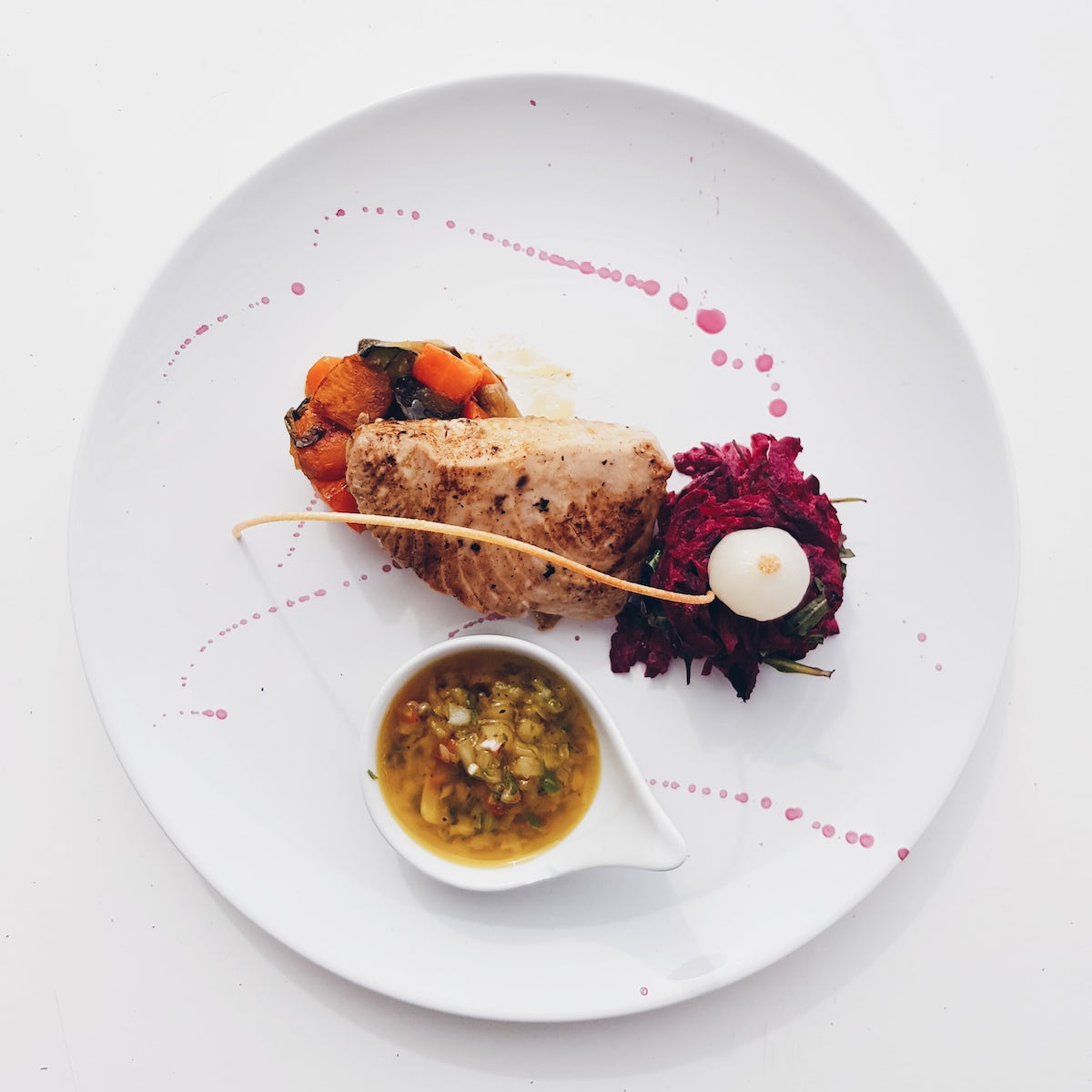
Agar recommends using bold colours to create appealing visuals. “The easiest way to add colour is to start working with more colourful ingredients. Items like carrots, potatoes, cauliflower, lettuces, beans, and more come in a variety of gorgeous colours,” he says. “The difference a purple cauliflower puree makes on a plate is striking.”
Lightspeed customer, Manteca, uses contrasting colours in its dishes by incorporating herbs into its fresh pasta. An egg yolk on top brings an extra pop to the dish.
Embracing seasonal ingredients is a fantastic way to incorporate natural colour into dishes, from green asparagus to pink rhubarb and vibrant red strawberries.
5. Match food presentation to your restaurant theme
Chef Jim Solomon says that the style of plating should match the restaurant’s atmosphere.
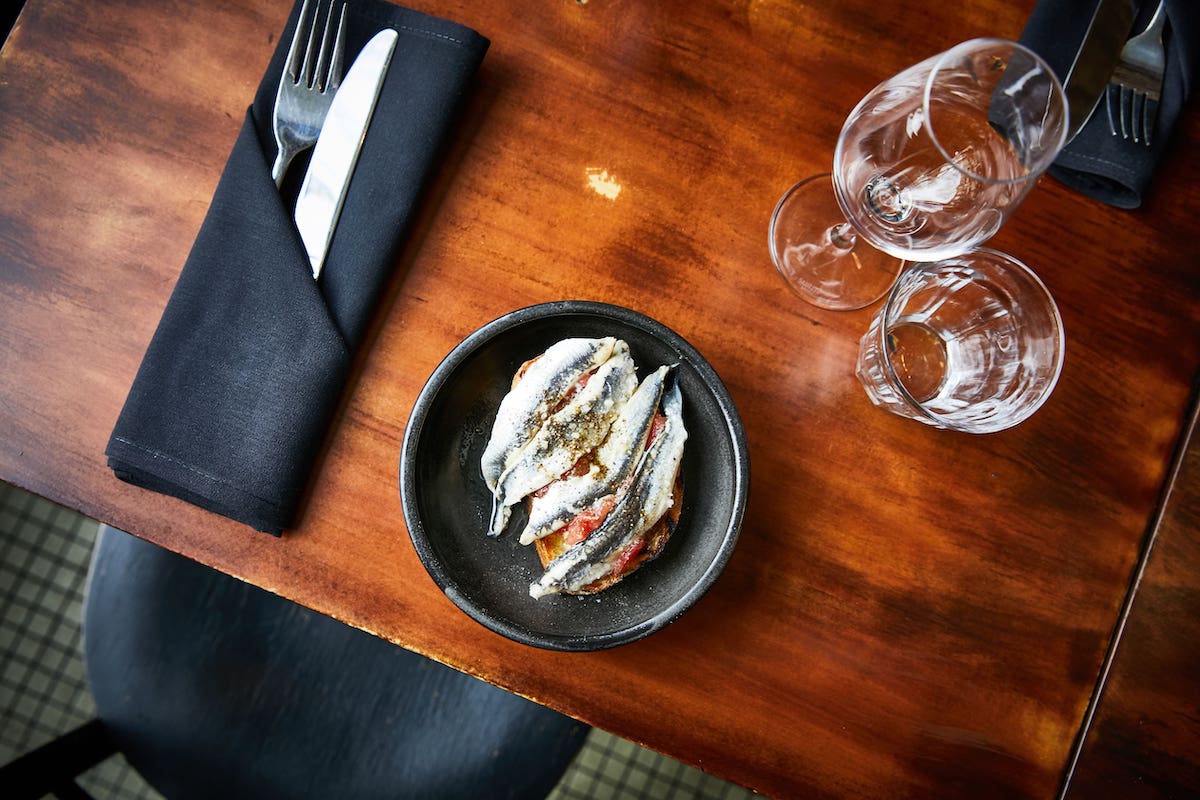
“Your guests expect a simple, welcoming presentation that stresses straightforward flavour cooked with heart and served with an unfussy, rustic quality. At relatively pricey, hip and high-end restaurants, guests want to see a degree of artistry and care taken in constructing the dishes.”
The way you plate your food should directly reflect your restaurant type.
Solomon adds that “food should have an element of height or visual texture, the balance of colour and thoughtful garnishes – both carefully placed and intentional in flavour and texture.”
If you’re a Michelin-starred restaurant that specialises in fine-dining, guests might expect a more refined style of presentation, compared to a country pub, where a heartier, more rustic style of presentation is considered the norm.
Being consistent with your presentation and theme will only strengthen your brand.
6. Choose the right plates
Chef Michael Welch preaches using the right plate size, colour, and style. The colour of the plate matters as the plate serves as the canvas for your food.
“Typically, chefs will stay away from blue plates as there isn’t any naturally blue food and it is thought to be an unappetising colour,” he says. “If you have something with a lot of vibrant colour, it might stand out better on a white plate.”

Jim Solomon echoes the importance of choosing the right vessel to present your dish. “Choose a dish vessel that makes it easy for your guest to eat. This is also an opportunity for your chefs to show their personality in the dishes they create.”
Cubitt House coordinates its serveware with its furnishings, creating consistency across the brand. Big Mamma is known – and loved – for its vibrant, Italian-inspired crockery, that’s as much a focus of the restaurant as the food itself.
View this post on Instagram
Brat favours oval platters for its sharing-style plates of whole grilled fish and roasted lobster, while Osip works with local artists to create exclusive crockery for its restaurant.
Get creative with your tableware, and choose pieces that align with your brand, and makes your food look its best.
7. Serve smaller portion sizes
You want to serve enough food to satisfy your guests and portion sizes can vary depending on the type of establishment you’re operating, but smaller portions are typically easier to style.
Stick to no more than six elements on each dish to prevent them from looking overcrowded.
Tasting menus naturally lend themselves to small portion sizes, as you’re often eating between eight and twelve courses. An example of a restaurant serving beautiful, smaller portions is Osip. At the tiny Somerset restaurant, you can expect to feast on the season’s best. The fresh ingredients – be it asparagus, purple daikon, or cabbage – are simply prepared, so they can shine.
View this post on Instagram
However, take this tip with a pinch of salt. If you’re a burger restaurant, like Fat Hippo, your USP is towering burgers, where patties are layered with sauces and served with lavish sides. In this case, it makes sense to ignore the ‘more is less’ motto.

Related read:8 Benefits to Serving Smaller Portion Sizes
8. Use edible garnishes and decorations
Garnishes and decorations are a great way of styling your dish, but there are some guidelines you should follow when using them.
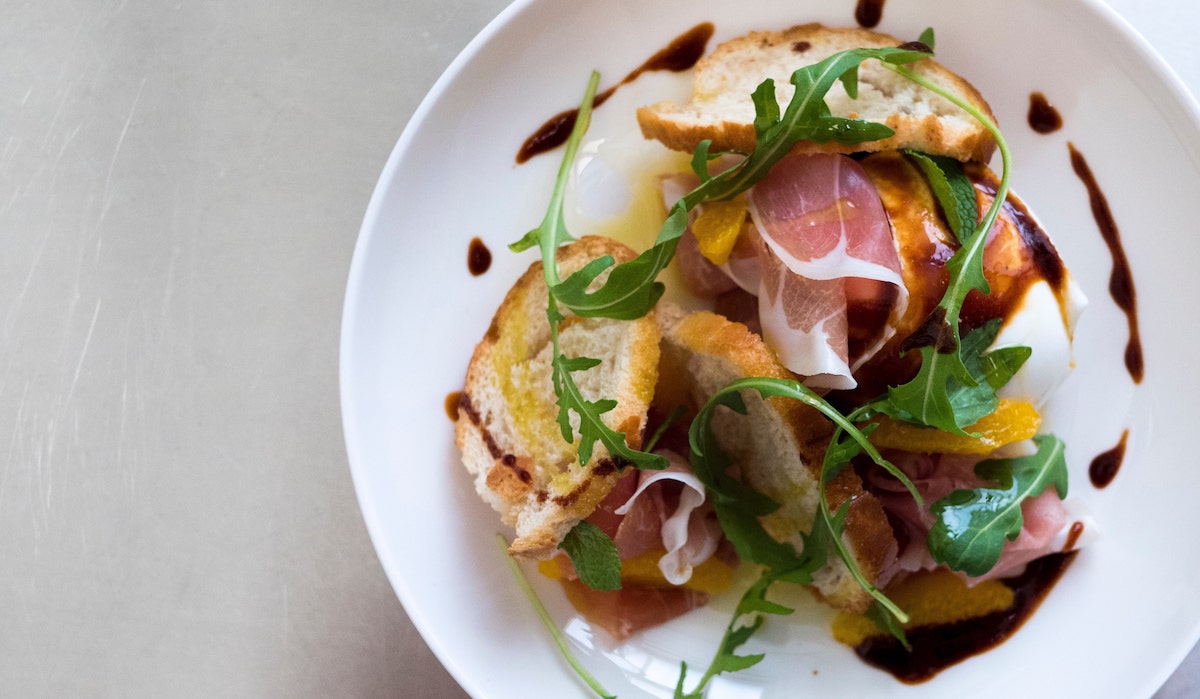
Whatever you use – whether it’s a herb, spice, or a flower – it needs to be edible. Everything on your plate should be placed with the intention of elevating the dishes taste first, and the way it looks second.
Here are ways that Lightspeed customers are embracing edible garnishes and decorations:
- Osip uses small herbs and green leaves to add flavour and beauty to a dish.
- Pollen Bakery makes the most of edible flowers to add colour to its frosted cakes.
Portland picks seasonal ingredients to enhance its dishes, from wafer-thin slices of radish to pickled blueberries.
View this post on Instagram
9. When in doubt, keep it simple
Michael Welch also emphasises the value of simplicity.
“Overcrowding the plate with unnecessary oils or spices or microgreens just takes away from the food you worked so hard to make,” he explains. “Subtraction is your best ingredient.”
Rather than piling on a zillion garnishes or swirls of sauce, let the quality of the cooking speak for itself.
“A properly seared steak with some fresh watercress and perfectly roasted baby potatoes will look better than the fanciest of plates with subpar cookery,” Welch says. “Proper cooking will give you a lot of contrast within your ingredients with both texture and colour.”
10. Express yourself
There’s an art in plating food; it’s where chefs can allow themselves to be creative and have a high impact on how guests perceive the dishes they’re eating.
Chef Brian Poe believes that chefs should approach food plating and presentation just as an artist would approach their next piece.
“Presentation should be approached just like art, cooking, and music,” says Poe. “Take a moment to relax and look at what the others are doing, learn a bit of the technique and then find your own voice and style.”
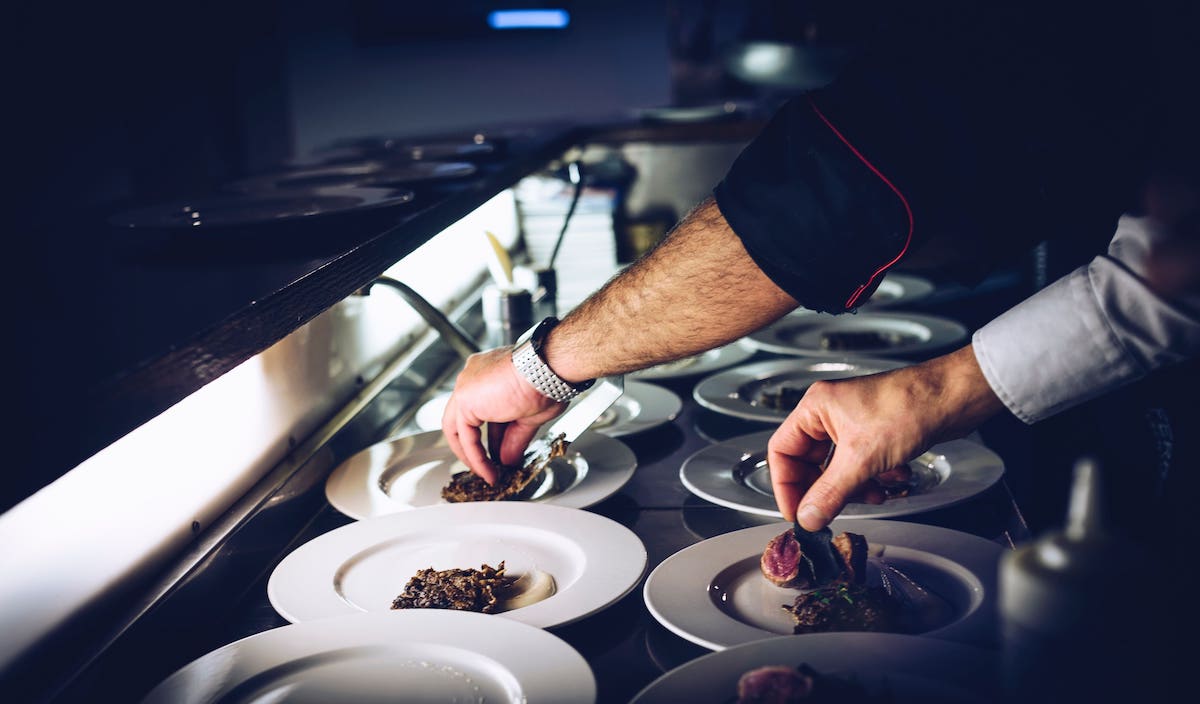
One of Poe’s favourite approaches is to go “Jackson Pollock,” holding out the plate like a canvas and splattering it with sauce. “Other times we might look toward a more linear approach which could either be Picasso or street graffiti-style,” he adds. “Other times the negative space technique might work.”
Big Mamma expresses themselves by going OTT, and serving its signature carbonara straight from a wheel of pecorino. On the other hand, zero-waste restaurant, Silo, make the most of negative space. This no-fuss presentation style ties into Silo’s zero-waste ethos.
View this post on Instagram
The role of technology in your food preparation
Plating food beautifully takes time. While you want it to look great, you need to plate your food as fast as possible – especially if it’s a hot dish that you don’t want to go cold before it reaches your guests.
You can’t help how long it takes to properly cook and prepare a meal, but you can give your chefs more time to prepare dishes by streamlining your ordering process.
Lightspeed’s electronic point of sale enables service staff to quickly take a guest’s order and send it to the appropriate kitchen workstation in seconds.

Kitchen staff see orders in real-time on their kitchen display system and can notify servers as soon as the dish is ready to be run to guests. Over the course of a service, those saved seconds compound and enable kitchen staff to spend time getting food plating and presentation just right.
The right restaurant technology can streamline your ordering and food preparation, which gives your cooks more time to create dishes with strong visual appeal.
Related read:Restaurateurs Share Their Tips for Success
Food plating and presentation matters
When consumers dine out, they expect their food to taste great and be visually appealing. That, along with your restaurant’s interior design, are all instrumental to the quality of their dining experience.
When plating your dishes, each element matters equally: colour, arrangement, balance, texture, and how easy it is for guests to eat. If you hit each of these out of the park, you’re setting yourself up to get rave reviews and user-generated content that you can share on your social channels for some extra publicity.
Curious how Lightspeed can help your restaurant with its food preparation? Let’s talk.

News you care about. Tips you can use.
Everything your business needs to grow, delivered straight to your inbox.


